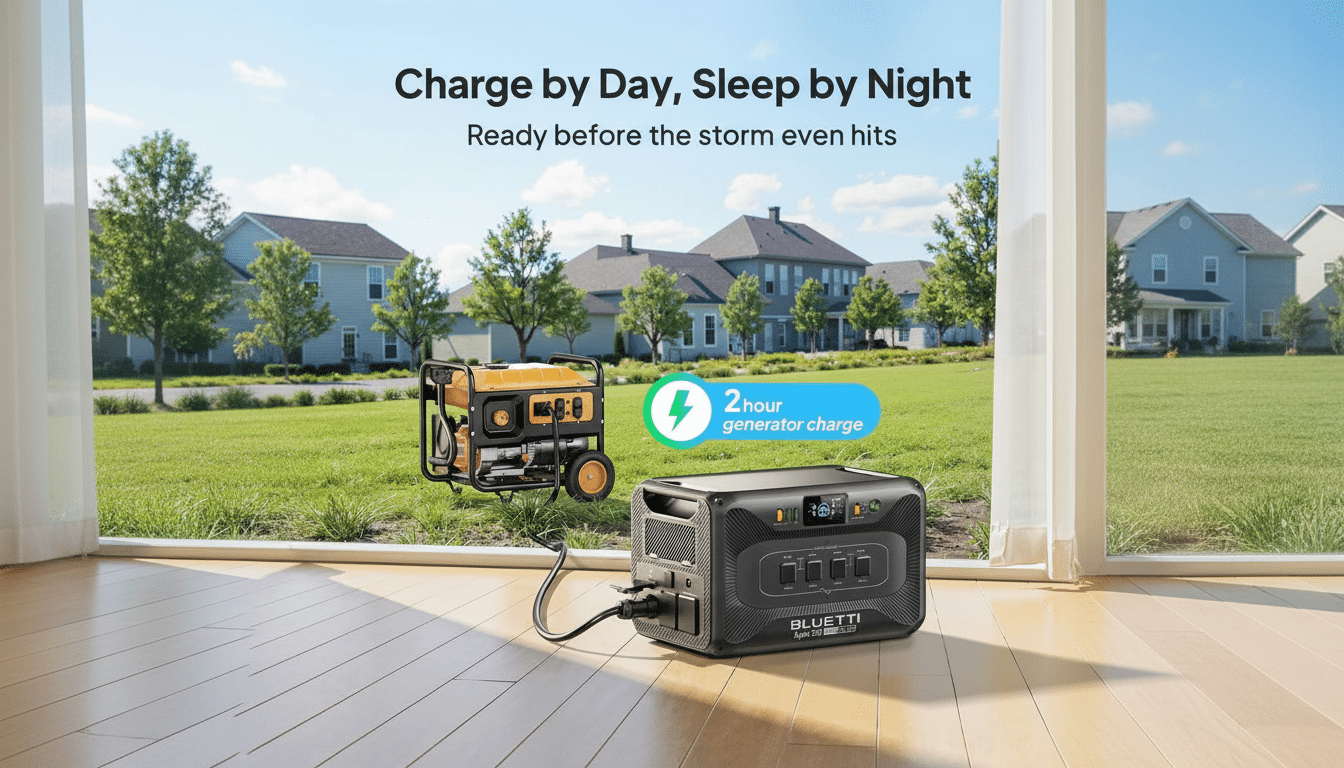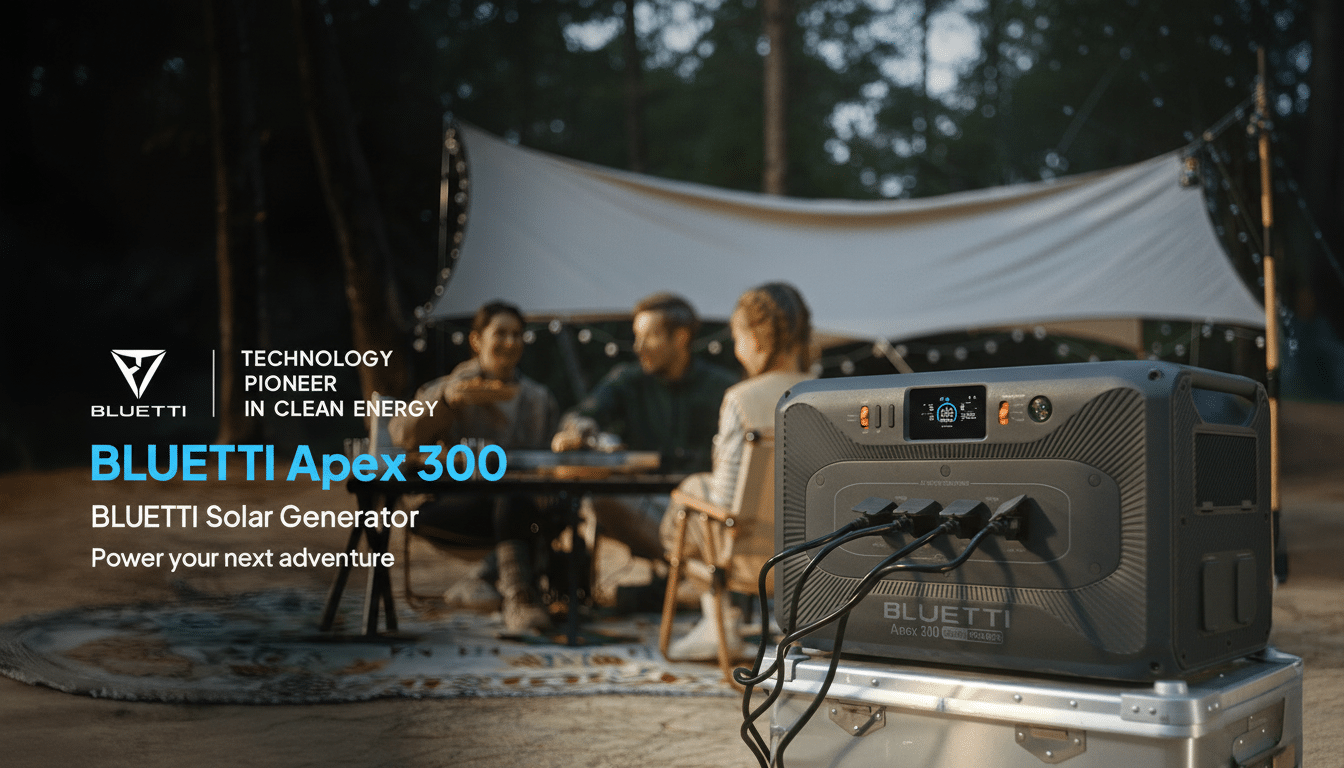Portable power stations are still niche products, but after covering new developments in the category over the past three years and testing several top models, we can say that these devices, which provide household-like electricity for anything from camping to working on a construction site far from an outlet, have finally become practical enough—and affordable enough—for widespread use.
The Bluetti Apex 300 is selling for $1,599, down from $2,399—33% off—which lops almost eight hundred dollars off one of the more serious systems out there to do more than just charge your phone and run campsite string lights.
- Why This Bluetti Apex 300 Deal Is So Good Today
- Real-World Loads and What You Get From the Apex 300
- Charging options and battery chemistry for Apex 300
- How it compares with alternatives at similar capacity
- Before you buy, what to look for in a power station
- Bottom line for shoppers considering the Apex 300 deal

Why This Bluetti Apex 300 Deal Is So Good Today
With 2,764.8Wh usable storage and 3,840W output capability, the Apex 300 fits in the performance layer typically dominated by backup power and RV shore solutions. On a price-per-Wh basis, this deal brings the price down to around $0.58 per watt-hour (Wh), which is well below the typical $0.80–$1.00 per Wh range seen at premium higher-output stations. For cross-brand shoppers, the price per Wh is an insightful lens because it standardizes capacity-to-cost across marketing messages.
Where the Apex 300 stands out is with its ports and voltage flexibility. Its four standard AC outlets are augmented by a pair of heavy-duty outputs—NEMA TT-30R and NEMA 14-50R—and a switchable 120V/240V mode. That combination is targeted squarely at RVers, contractors, and homeowners who want to power larger appliances or plug into common RV or home standards without adapters.
Real-World Loads and What You Get From the Apex 300
With roughly 2.8kWh on board, it should provide practical run times for everyday household and outdoor use cases. An older small Energy Star refrigerator draws about 100W; an average modern fridge will use approximately 150W on average, size dependent. If the calculation is right, the older fridges would run for 12–16 hours, with an inverter overhead of 10–20% depending on the quality of your inverter. A CPAP machine at 40W could provide multiple nights of use on one charge. Power tools like circular saws (1,200–1,800W) and shop vacs (1,000–1,400W) fall within what the unit can put out all day long—though it’s also important to note that frequent big draws of power will drain capacity faster.
The addition of TT-30R and 14-50R receptacles is what makes the Apex 300 the most friendly to RVs. A 13,500 BTU RV air conditioner can draw 1,500–1,800W; the Apex 300 will enable the start-up and running of many units, but continuous cooling for an extended period would deplete reserves within a couple of hours unless supported by solar or a generator. The 120/240V switch also allows you to power split-phase loads, such as some well pumps or higher-draw appliances in a pinch—an uncommon feature for a portable station.
The manufacturer touts these upgrade options, but for whole-home backup you will likely need to add an external battery or pair it with solar. Outages have become more frequent and gone on longer in vulnerable areas, according to the U.S. Energy Information Administration, increasing over the past decade. For most households, that makes a modular system—portable station plus add-on batteries and rooftop or portable panels—a more robust strategy than a single, fixed-capacity unit.

Charging options and battery chemistry for Apex 300
Its high-end lines often employ lithium iron phosphate (LiFePO4) cells, which are valued for their safety and extended cycle lives compared to standard lithium-ion chemistries. Testing organizations such as Consumer Reports have industry benchmarks for lifespan of LiFePO4 packs exceeding 3,000 full cycles before a reduction in capacity down to 80%, even more if only partially cycled. If the Apex 300 is similarly good value for money, the bargain price boosts long-term cost per cycle and up-front value.
Solar readiness also matters. Try to find a strong MPPT controller, high PV input wattage, and versatile charging ability (AC wall charging, solar, and possibly dual-input bonding). For boondocking or extended power outages, the capacity to take on serious solar input can transform a big battery into its own power center, particularly when paired with midday hours of peak sun as categorized by the National Renewable Energy Laboratory’s resource maps.
How it compares with alternatives at similar capacity
The EcoFlow Delta Pro (about 3.6kWh) and Goal Zero Yeti 3000X (approximately 3kWh) fall within the same performance class that people use as benchmarks. With promotions, their street prices generally fall between $2,000 and $3,000, so they can yield roughly $0.60 to $0.90 per Wh after inverter cost. The current ~$0.58 per Wh of the Apex 300, plus that 14-50R and switching between 120V and 240V, give it an advantage in RV or workshop settings where those connections decrease adapters, cabling complexity, and conversion losses.
Jackery’s modular Explorer 2000 Plus provides a more affordable entry point with add-on batteries, but its standard outputs and single-voltage design are better suited to consumer electronics and light appliances than split-phase or high-amp receptacles. If your use case is heavy loads and RV-native ports, the Apex 300 is the special-purpose tool.
Before you buy, what to look for in a power station
Also make sure your heavier-usage devices are rated within the 6,000W continuous and surge ratings, and that their voltage matches what is selected on the 120/240V switch. Ask for precise PV input specs if solar is in your plans. Factor in weight and portability, too—high-capacity stations may weigh more than 60 pounds—as well as storage and ventilation. For emergency planning purposes, FEMA guidelines include maintaining clear airflow indoors around power equipment with a low-odor output, which would even include battery-based systems that do not produce any exhaust into living or working spaces.
Bottom line for shoppers considering the Apex 300 deal
Discounted to the tune of $800, the Bluetti Apex 300 brings serious capacity, high-output AC power, RV-ready ports, and split-phase capabilities for a cost less than most of the market on a price-per-Wh basis. And if you’re in need of a portable unit that can manage refrigerators, power tools, or RV hookups without the adapter juggling, this is a momentous purchase. Just size the specs to your loads and, if you expect multi-day outages, build in expandability plus solar so you can take what would be a good deal and grow it into a long-term solution.

